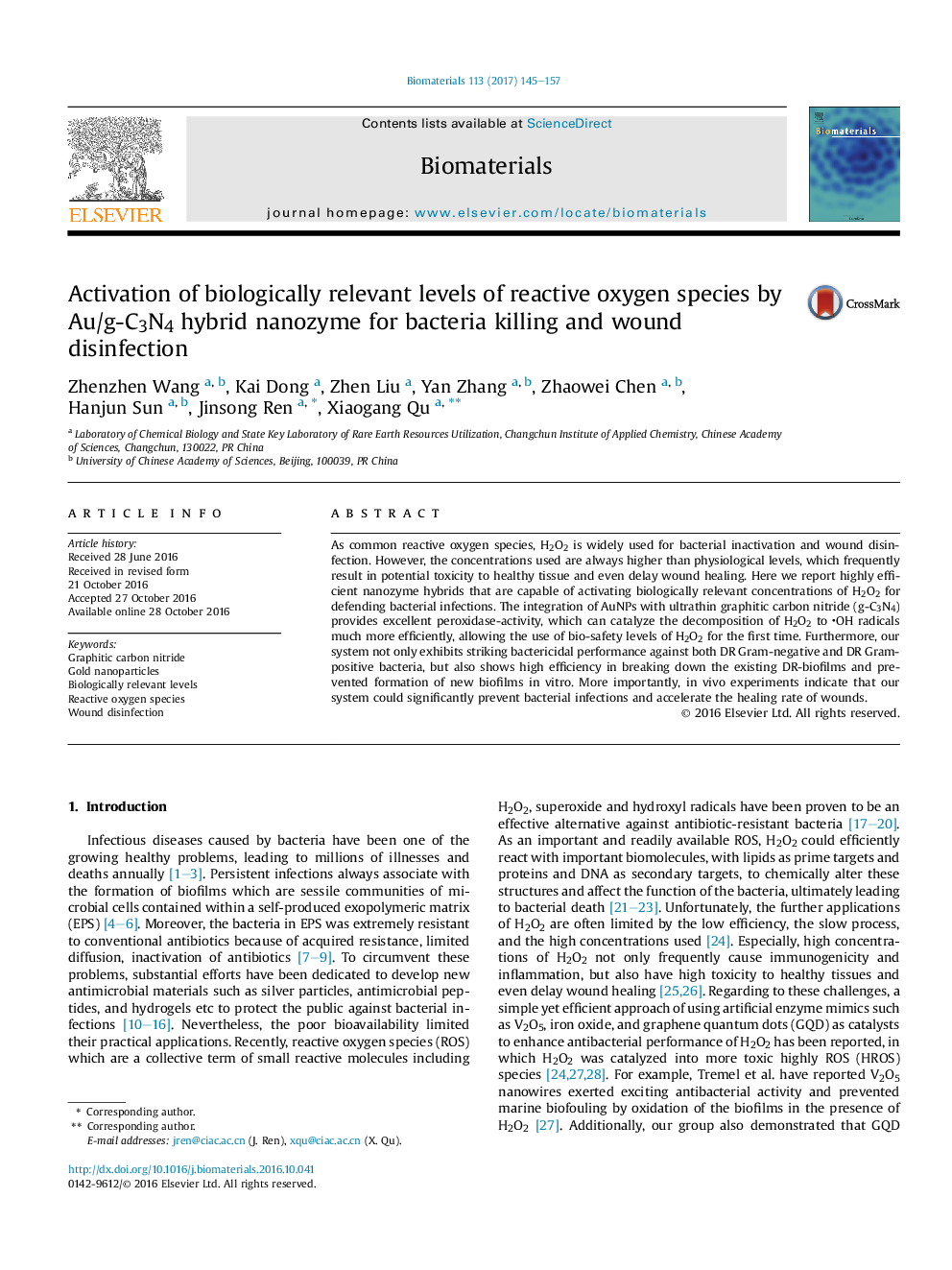| Article ID | Journal | Published Year | Pages | File Type |
|---|---|---|---|---|
| 6451057 | Biomaterials | 2017 | 13 Pages |
As common reactive oxygen species, H2O2 is widely used for bacterial inactivation and wound disinfection. However, the concentrations used are always higher than physiological levels, which frequently result in potential toxicity to healthy tissue and even delay wound healing. Here we report highly efficient nanozyme hybrids that are capable of activating biologically relevant concentrations of H2O2 for defending bacterial infections. The integration of AuNPs with ultrathin graphitic carbon nitride (g-C3N4) provides excellent peroxidase-activity, which can catalyze the decomposition of H2O2 to OH radicals much more efficiently, allowing the use of bio-safety levels of H2O2 for the first time. Furthermore, our system not only exhibits striking bactericidal performance against both DR Gram-negative and DR Gram-positive bacteria, but also shows high efficiency in breaking down the existing DR-biofilms and prevented formation of new biofilms in vitro. More importantly, in vivo experiments indicate that our system could significantly prevent bacterial infections and accelerate the healing rate of wounds.
